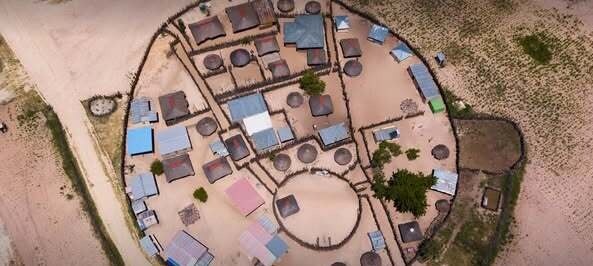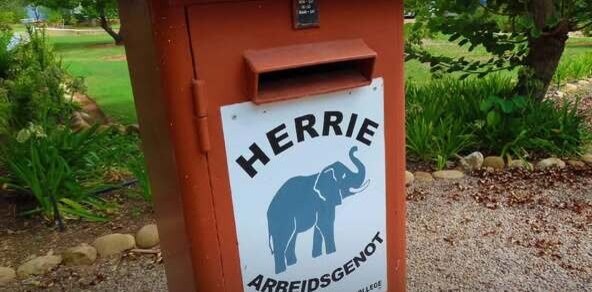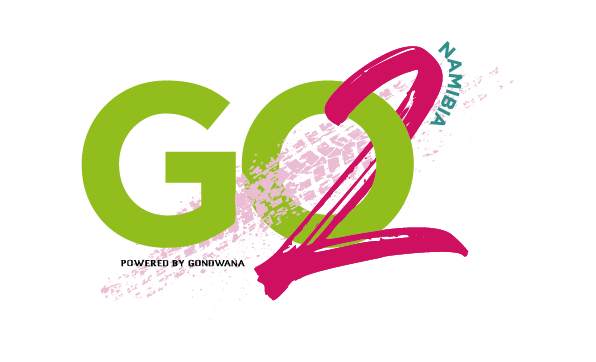Set in the Swartberg Mountains of the Western Cape, the ‘ostrich capital of the world’ contains all the ingredients that make for a good Klein Karoo destination: a bevy of longnecked birds winking at you with wide-eyes and lengthy eyelashes, a fascinating history of an opulent bygone era of feather boas and fashion accessories, and a series of magical caves that would make a fairy kingdom feel right at home.
“If you see an ostrich coming for you, quickly lie face down and cover your head with your hands, and it will soon lose interest,” our guide Oreal told us on the Safari Ostrich Farm tour where for most of the time we, thankfully, sat atop the tractor trailer while children fed pellets to the ostriches and squealed with delight as they poked their heads in. This was among the other snippets she shared with us, like the fact that these big birds’ eyes are larger than their brain and they can run like the wind at up to 70km/hour. So, while not being as fast as the speedy cheetah, they are able to keep a steady speed for a longer period. And if you’ve ever had an ostrich running on the road in front of you, you know that to be true. We took turns to stand on the 1½kg eggs, with no effect; chuckled at a jar of golfballs and goodies that ostriches had swallowed, including a baby’s shoe; watched the giant eggs incubate and walked through a well-presented exhibit about the ostrich industry, enlightening us on all things ostrich.

Reservations manager, Alma de Villiers, had already given us an introduction to the ‘O’ worlds, that is, the world of ostriches and Oudtshoorn. “Oudtshoorn residents are dependent on ostriches,” she told us, “whether you work on an ostrich farm, in the tannery, in the feather factories or in the supporting industries.” She continued to tell us that the town has also been referred to as ‘Velskoendorp’ for all the leather shoes produced there, was once known as ‘Little Jerusalem’ for the many Jewish immigrants that settled in the town, and that ostrich feathers were once worth their weight in gold.
The hot and dry climate of the semi-desert proved to be the ideal environment for ostrich farming and ostrich feathers made their way across the oceans to adorn women’s hats and clothes. The zenith of the feather industry was between 1875 and 1880, and again in 1913. The market collapsed in 1914. According to The Chicago Tribune, it was the result of several factors: ‘the start of WWI, overproduction and the popularity of open-topped cars, which made ostrich-feather hats impractical’. Later on, the demand for lean ostrich meat and leather grew and Oudtshoorn once again became an ostrich capital, while also attracting tourists to the farms.
Driving around town with its quaint old sandstone houses, you can still spot the feather palaces built from the riches of the feather industry in Art Nouveau, Victorian and Neo-Renaissance Revival styles. Featherduster maker, Susan Mpofu, posed for the perfect feather photo in front of the museum, displaying the dusters she makes from feathers bought from the farms and then dyed into outrageously bright colours.

I read up a bit more about the Oudtshoorn history and learned that farmer Cornelis P Rademeyer was persuaded by residents in 1838 to make some of his farmland along the Hartebees River available for the first church in the area, and the town gradually grew around the church. In September 1847, once again persuaded by the neighbours, he requested permission from the Cape government to turn his farm ‘Hartebees River’ into a town. He named it after Baron Pieter van Rheede van Oudtshoorn, a senior official in the Dutch Cape Colony, who had been appointed governor but died at sea on the way to take up the post.
But long, long, before the ‘O’ worlds, the surrounding caves had been known to the indigenous people, the Khoisan, who found shelter in them thousands of years ago. The word ‘Cango’, (‘mountains rich in water’), is a Khoisan word, stemming from that time. And going further back in Earth history, the caverns had started to form 20 million years ago when the acidic groundwater began to erode the 100 million-year-old limestone rock. It was only a mere three million years ago when the spectacular stalactites and stalagmites began to form when the water that filled the caverns gradually drained away.
We drove the 29km north of the town to visit the renowned Cango Caves. The story of how farmer Jacobus van Zyl stumbled across the entrance in 1780 while searching for strayed cattle and descended into the main chamber by means of a harness, is related by the guides on their hourly tours. And, if you’re lucky enough, like we were, and if your guide is a good singer, you may be treated to the well-known South African Click song, the national anthem ‘Nkosi Sikelel’ iAfrika’ (God Bless Africa) and Johnny Clegg’s ‘Asimbonanga’ echoing through the chambers as you stand there awed by the incredible beauty of this Earth masterpiece, now a major tourist attraction.
Fairies and elves stand to attention, I’m sure, as their fairy dust works its magic to listen to song after song flowing beautifully through the rock walls, spiralling around the towering golden columns and lying briefly on the shimmering surfaces before lifting up to other realms to serenade angels. And that is no exaggeration of this exquisite site that retains its appeal, even with concrete and lighting that is appreciated along the way for making this awe-inspiring treasure chest visible and accessible to all.

Back outside in the daylight, the vegetated Swartberg Mountains glistened in the rain as, steeped in wonder, we drove towards the town, appreciating all the ‘O’s, but adding a few enchanting ‘C’s to the mix as well.
(References: Oudtshoorn - Wikipedia; Cango Caves information brochure)








.png)

SUBMIT YOUR COMMENT